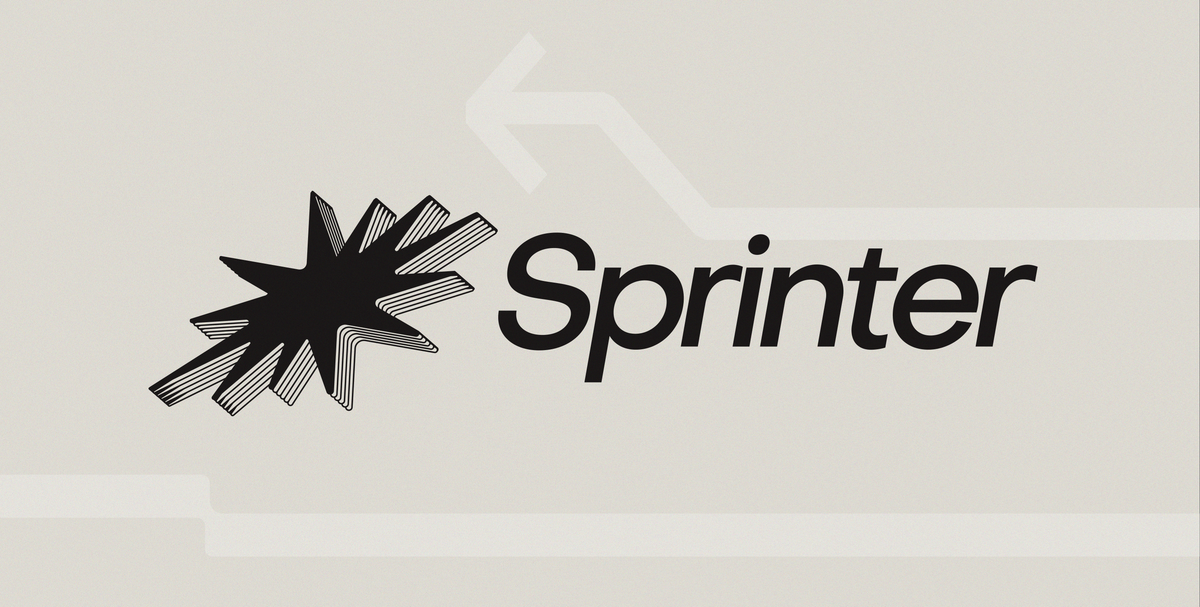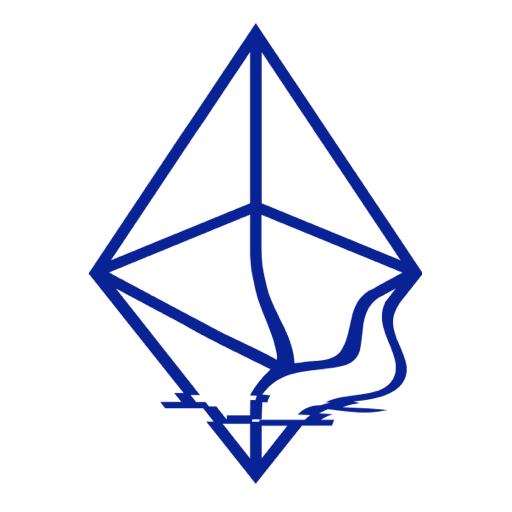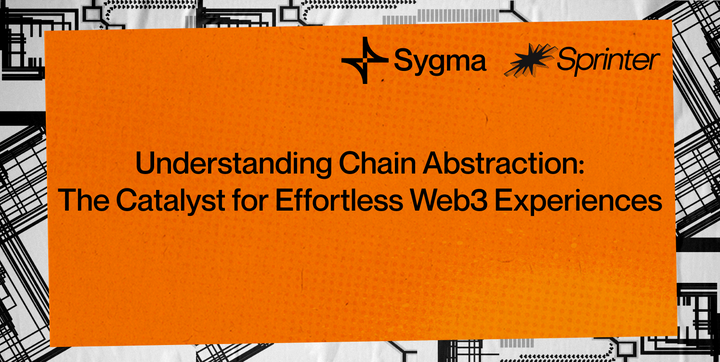Sprinter: Chain abstraction for applications


The Problem
User experience (UX) plays a critical role in attracting and retaining users. Today, the blockchain space is facing a crucial challenge: complex UX across multiple chains that hinders the adoption of decentralized applications (dapps).
As new technologies and account options grow, people are finding it harder to manage their assets and deal with complicated transactions. To achieve mainstream adoption, blockchain applications must become far simpler and completely intuitive. They should provide a straightforward, smooth experience that gets rid of the current technical difficulties that scare away new users.
What is Sprinter?
Sprinter is an interoperable solver engine for chain abstraction providers. Sprinter allows dapp developers to support various account types across a multichain ecosystem. The underlying transactions are swift and seamless, giving your end user a single-click experience when enacting otherwise complex transactions. Sprinter is developed by the team behind the Sygma cross-chain connectivity protocol.
Sprinter isn’t a lock-in service—far from it. We support multiple wallet types and chain abstraction solutions so any blockchain-enabled app can provide the intuitive user experiences people expect.
As methods for chain abstraction—the “coverup” of complex blockchain processes—proliferate in the web3 space, we’re working to improve the application level that matters most to users and fuels web3 adoption. We're building a web3 where users don't need to know any technical details to use multi-chain applications.
With Sprinter, you can…
- Treat multiple account balances as a single balance
- Sign transactions once and remove network switching
- Automatically use the best execution paths for:
- Cross L1 transfers
- Cross L2 transfers
- Cross L2 to L1 transfers
- Cross L2 contract execution
Sprinter improves user experience
If a user wants to use your app but has their assets somewhere else, Sprinter will go get them. Sprinter solves the “cold start” problem of decentralized applications and games by making user funds on other chains immediately available for use.
Sprinter improves developer experience
Sprinter provides just-in-time (JIT) liquidity and bears the equivocation risk in transactions. Integrating Sprinter helps you build cross-chain applications that achieve the UX people expect, improving capital efficiency for you while your users save time and money.
The need for user-friendly applications
The blockchain space is at a critical juncture: improve now, or face a restart cycle.
Challenging adoption from day one is blockchain’s UX problem. The early days are forgivable, most early-adopters were tech literate and unlikely to shy away from ugly applications or a completely manual user experience. Closing this chapter is the ultimate goal of chain abstraction.
Most people aren’t like blockchain technology's early adopters. Most people are afraid of their PC’s command prompt. Chain abstraction solutions seek to solve much of blockchain's complexity through minimizing user decision-making, reducing interface complexity, and improving transaction reliability across chains.
Our CPO, Greg Markou went to EthCC 2024 to talk about this new wave in web3 development. Watch the presentation below.

Abstracting complexities of blockchain technology
Usability is the most important factor developers need to improve if web3 is going to achieve mainstream adoption. One of the leading reasons people choose to enter cryptocurrency markets today is its ease of use compared to legacy markets. According to a Forbes (from the Forbes Advisor Survey conducted in the UK), 42% of respondents said they entered the cryptocurrency market because it’s easier to invest through an app.
Contrasting this, the number of unique, active addresses on Ethereum lacked significant growth between 2023 and 2024 (etherscan.io).
In 2022, the rise of L2 solutions fueled growth in the Ethereum ecosystem. In 2024, blockchain developers are zeroing in on UX. By creating solutions that leverage the vast, multichain ecosystem of today and embracing non-crypto natives, we can supercharge our industry's growth going forward.
Blockchain application adoption, at the current level of usability, is difficult. We need to expand user bases across chains and across demographics. Our blockchain-powered apps need to be far, far simpler to use.
Unified experiences at the application layer
In 2022, L2s pushed blockchain growth. Today, rollups are poised to shape the future—L1 scalability is dependent on their ability to bundle and compress multiple (up to/over one-million daily by ZkSync’s numbers) transactions before posting to the L1 blockchain.
— ZKsync (∎, ∆) (@zksync) March 27, 2023
The flip side to these solutions is a dramatic increase in fragmentation. Each new rollup (launching practically every week) and each new EIP-4337 wallet increase the disparity of funds and accounts across the multichain ecosystem.
Key EIPs Changing the Landscape
- EIP-4337: Account Abstraction
- EIP-7555: SSO Login
- EIP-7715: Delegating permissions to embedded wallets
These EIPs focus on how wallets interact with the application layer and tie back into chain-agnostic protocols.
The big game-changer for web3 applications is EIP-7715:
- Allows tagging embedded wallets with permissions
- Enables off-chain-based signatures for delegating actions
- Users can potentially sign up to 20 transactions on L2s without realizing
- Removes the need for one button-click per transaction
- Allows applications to control the signing experience
Understanding intent-based design
Designing apps from the perspective of user intentions helps us to decide what and how much a user should be interacting with. As an interoperable solver engine, Sprinter makes user intents achievable while demanding the least amount of user interaction possible. For intent-based design, the UX principle “don’t make me think” is paramount.
For example:
A DeFi user’s intent is to “make at least 10% on my ETH holdings”.
The methods available to solve this intent are mostly irrelevant—the user doesn’t usually care how their intention is achieved.
There are multiple complexities underlying the intent: cross-chain calls, multiple transactions, liquidity issues, and potential slippage. Beyond this, there’s a risk for “bricked” states where transactions only partly execute across chains.
Sprinter is an interoperable solver engine—it takes intents generated by users, protocols, and front ends and solves them with best execution path.
How Sprinter runs
This example shows how Sprinter unifies balances from three different source chains (Chain A, B and C in the top left) and solves the user's intent—to transact on a new, fourth chain (Chain D, top right).
Sprinter’s process flow
- User connects their wallet to the application
- Application provides balances data to Sprinter
- Application prompts Sprinter to get quotes
- Sprinter saves quotes to the quote book/RFQ
- Application receives quotes from Sprinter
- Quote book watches the Order Solver for relevant quotes
- Source chains sign transactions to the intent bridges
- Quote book watches for JIT quotes, transacts to target chain early for UX
- Order Solver resolves the relevant orders, sends to Intent Bridges
- Complete transfer from Intent Bridges to JIT Liquidity service
Sprinter integrations: B3 and Hyperdrive
Sprinter is a fresh release, but we’re already integrating into some major projects in B3 and DELV’s Hyperdrive.
B3 Gaming by Base

B3 is the horizontal, multi-L2, web3 gaming platform launching on Base. Their mission is to bring web3 gaming to the level of usability that today’s gamers expect—and that’s why Sprinter is the perfect fit for their tech stack. Games hosted on B3 will never have to grapple with a cold start and early drop-offs due disparate user funds.
Sprinter makes sure every player can access their balance across chains, and across games, and right away.
“We’re very excited to collaborate on building a gaming ecosystem that from day one caters to the needs of web2 gaming companies, not just a generalized blockchain. That is fundamentally important: chain abstraction has come a long way in the last year, and we can scale an ecosystem horizontally while maintaining incredible web2 UX.” - Greg Markou, CPO, ChainSafe Systems
Hyperdrive by DELV

Just like ChainSafe, DELV is a champion of open-source software. Hyperdrive is an Automatic Market Maker (AMM) protocol for fixed-rate markets, using assets from yield sources to create tradable tokens. These tokens are bought at a discount and redeemed at full value at maturity, offering a fixed return.
Sprinter greases Hyperdrive’s wheels by letting users take advantage of their platform immediately, avoiding every blockchain app’s first critical drop-off point: onboarding.
"Our users might have their assets on multiple chains—in DeFi, it’s common to have assets on mainnet, OP, ARB, BASE...so we needed a way for users to easily and efficiently bring the assets they need to one chain in the most efficient way possible. That is: cheap, fast, and in a single transaction." - DELV team
Sprinter roadmap
Here’s a look ahead at our vision for Sprinter V2:
- Receive and process intents from any intent sources/platform via API Gateway.
- Solver engine that process intents and pre-quotes best possible path.
- Algorithm optimization to maximize cost efficiency per chain.
- Ability to maximize horizontal scalability for L2 blockchains.
Join Sprinter’s run club
Set your application apart and embrace the multichain ecosystem.






